The Impact of Toronto’s Financial Sector

Updated: July 6, 2023
Toronto is North America’s second-largest financial centre, ranking among the most important in the world. The city’s financial services sector continues to grow and has a significant influence on the local economy, Canada’s international footprint, and the success of Canadian businesses.
This interactive page profiles the growth and influence of Toronto’s financial services sector, and how the city ranks among major global financial hubs. You can also download each set of charts and data by clicking the buttons throughout this report.
Key Findings
- Toronto is the second-largest financial centre in North America, behind only New York, and is ranked seventh globally, in employment.
- Both employment and GDP growth in the financial services sector have outpaced the averages of all sectors in Ontario, Toronto, and Canada over the last five years.
- Over the last 10 years, employment in Toronto’s financial services sector grew at the fifth-highest rate in the world. The city had the fastest-growing financial sector in North America over that period.
- Financial services accounted for the largest share of Canadian foreign direct investment abroad in 2018, reaching $643 billion—50 per cent of Canada’s total FDI.
- The financial services sector is the largest private sector contributor to GDP in Toronto, the second-largest in Ontario, and third-largest in Canada.
- The financial sector provided more than $267 billion in credit to small and medium-sized enterprises in Canada in 2018.
- Canada’s five largest banks are investing $850 billion in sustainable finance.
- The finance and insurance sector is a leader in diversity at the executive level. It has one of the highest shares of female executives in Canada.
Toronto’s financial services sector employment ranks second in North America
(rank in 2018 financial services employment)

Sources: Various national statistical agencies; The Conference Board of Canada.
What Toronto’s financial sector brings to the economy

- Toronto’s financial services sector is the third-largest private sector employer in the city, after manufacturing and professional services.
- In 2018, the city’s financial services sector alone generated a total of $19.4 billion in fiscal revenues for the City of Toronto and the governments of Canada, Ontario, and other provinces.
- Both employment and GDP growth in the financial services sector have
outpaced the averages of all sectors in Ontario, Toronto, and Canada over the last five years. - The financial services sector is the largest private sector contributor to GDP in Toronto, the second-largest in Ontario, and third-largest in Canada.
Financial services are outpacing industry growth averages
(five-year average annual growth rate, per cent)

Sources: The Conference Board of Canada; Statistics Canada.
How Toronto measures up

- The Banker’s annual rankings of international finance centres position Toronto second in North America, behind New York. Toronto ranks eighth in the world.
- Toronto is the second-largest financial centre in North America, behind only New York, and is ranked seventh globally in terms of employment.
- Toronto had the highest growth rate globally for fintech investment from 2010 to 2018.
- Over the last 10 years, employment in Toronto’s financial services sector grew at the fifth-highest rate in the world. The city had the fastest-growing financial sector in North America over that period.
- Toronto has the highest concentration of financial services employment in North America,
at 8.3 per cent in 2018. Only Luxembourg and Singapore have higher concentrations of financial services employment.
Ranking of global financial centres
(world ranking)

Source: The Banker, Ranking Financial Centres
Canada’s global finance footprint

- Canadian financial services exports reached $14 billion in 2018.
- Financial services exports grew an average of 7.4 per cent per year over the past five years, making them Canada’s second-fastest growing services export.
- Financial services accounted for the largest share of Canadian foreign direct investment abroad in 2018, reaching $643 billion—50 per cent of Canada’s total FDI.
- More than one-third of the revenues from Canada’s five largest banks are generated abroad.
- The share of foreign investment in major Canadian pension fund assets has more than doubled, from 24 per cent in 2000 to 57 per cent in 2019.
- Manulife and Sun Life, two of Canada’s largest insurance companies, relied on international operations for 76 and 63 per cent of their earnings, respectively.
Financial services had the second-highest growth rate in services exports for Canada.
(average annual growth in services exports, 2013–18, per cent)

Source: The Banker, Ranking Financial Centres
A glance at financial services subsectors in Canada

Asset management
- Canada is ranked third among OECD countries in total assets of funded and private pension plans.
- Canadian financial institutions and pension funds held $7.8 trillion in assets at the end of 2018.
- Seventeen Canadian pension funds rank among the largest both in North America and globally, as reported by Pension & Investments World 300.
- Toronto is ranked sixth globally in total bank assets by The Banker.

The TMX Group
- An estimated 40 per cent of all trading on the TSX and TSXV comes from outside Canada. International issuers raised $3.9 billion in equity in 2017.
- Over the last five years, 53 per cent of global mining financing was done through the TSX or TSXV.
- The TSX and TSX Venture Exchange are leaders in mining, clean technology, and oil and gas listings.
- The TMX Group is the third-largest exchange in North America, behind only the New York Stock Exchange and the NASDAQ.
- The TMX Group was #1 in new international listings in the first half of 2019.
- The TSX had 59 new innovation-sector corporate listings in 2018—eight of them being international companies.

Banking
- According to the World Economic Forum, Canada’s banking system has been the most sound in the G7 since 2007.
- Canada’s big five banks are all ranked in the global top 100 largest banks. RBC, the fifth-largest bank in North America, leads the way at number 23.
- The big five banks’ market capitalization has more than doubled over the last 10 years.
- The financial services sector leads all other Canadian sectors in representation of women on boards.
- At Canada’s six largest banks, women account for 38 per cent of senior managers and 58 per cent of the workforce.

Insurance
- Canada is home to three of the largest 15 life insurance companies in the world.
- The assets of the Canadian life and health insurance sector totalled over $1.7 trillion in 2017, with over half from foreign assets.
- The assets of Canada’s P&C totalled $175.7 billion in 2018.
- Finance and insurance have the third-largest ratio of female employment, behind education and health care.
How does the financial services sector support Canadian businesses?

- In 2017, Canada ranked second in total venture capital funding among OECD countries.
- The financial sector provided more than $267 billion in credit to small and medium-sized enterprises in Canada in 2018.
- Canadian venture capital and private equity raised over $26 billion in 2018.
- Canada’s five largest banks are investing $850 billion in sustainable finance.
- The TMX Group’s market capitalization has averaged 9.1 per cent growth over the last 10 years.
- The amount of credit for Canadian businesses has almost doubled since 2011, growing by 86.7 per cent.
- The finance and insurance sector is a leader in diversity at the executive level. It has one of the highest shares of female executives in Canada.
The majority of small business lending came from domestic banks
(value of credit outstanding to small businesses, July 2018, $ billions)

Note: “Small business” is defined here as those authorized to borrow less than $5 million.
Source: Statistics Canada, Table 33-10-0013-01.
Access the pdf, charts, and tables here.

This online experience was sponsored by Toronto Finance International (TFI). TFI is a public-private partnership between Canada’s three levels of government, the financial services sector, and academia. TFI’s mission is to lead collective action that drives the competitiveness and growth of Toronto’s financial sector, and establishes its prominence as a leading international financial centre. For more information about TFI, please visit www.tfi.ca.

